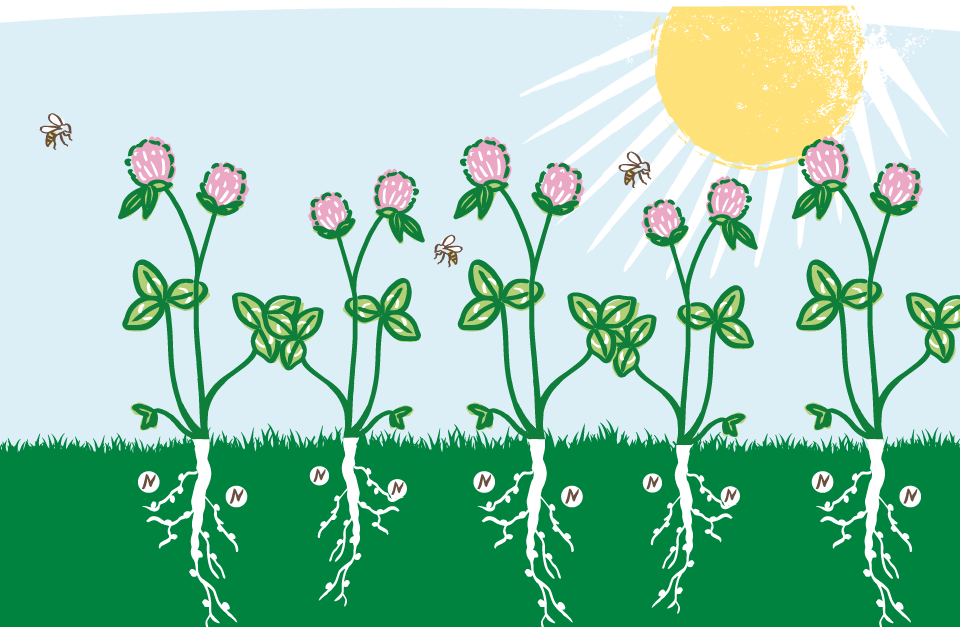

Suitable soils and optimum pH
Grows on most soils, including the drought prone. The optimum pH is 6.0-6.5 for N fixation, but red clover will tolerate 5.6.
When to sow
Sow from March until September. Red clover mixtures can be undersown in an arable crop, or after harvest provided there is enough time for the plants to develop sufficiently prior to winter cold. On light soils in dry districts autumn sowings perform better as these will have well established roots capable of better growth in dry seasons.
How to sow
For sound establishment, a well cultivated, firm, level seedbed is needed to ensure that the small clover seeds are drilled uniformly at a shallow depth of 10-15 mm. The use of a roller prior to and after sowing is essential, ideally rolling twice for maximum seed to soil contact, especially if a flat roll is not available.
Management
The competitiveness of red clover against weeds is low at the early establishment phase particularly if sown alone. Topping is of value and ‘clover-safe’ herbicides are available, though they can check red clover development to some degree. To avoid clover sickness (a combination of soil-borne sclerotinia and stem eelworm) a five year gap should be allowed between leys containing red clover.
The majority of red clover varieties has a persistence of 2 years, care should be taken to source a variety with better persistence for longer term mixtures.
Nutrient requirements
Red clover will fix its own N, but P and K levels must be maintained at an ADAS Index 2. A small quantity of N can be applied in the autumn or early spring to enhance initial growth. This should not exceed 25kg N/ha.
Yield potential
Forage yield in the establishment year of a spring-sown sward is circa 60% of that possible in the first harvest year which should be around 15t DM/ha. The yield is spread over 2-3 cuts per year. Typical silage analysis has a dry matter of 30%, a crude protein of 19%, a D-value of 72 and an ME of 12MJ.
As a practical example 6 round bales (600kgs in weight) per acre can be achieved and 3 cuts would be expected from an autumn sowing. (yields maybe slightly lower on single cut red clover/perennial ryegrass mixtures)
Date Posted: 18th January 2018



